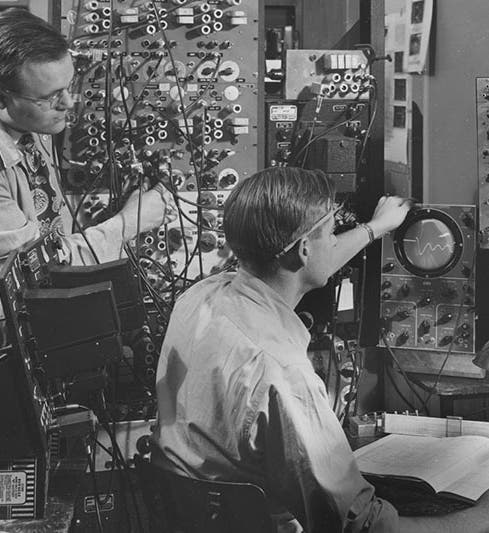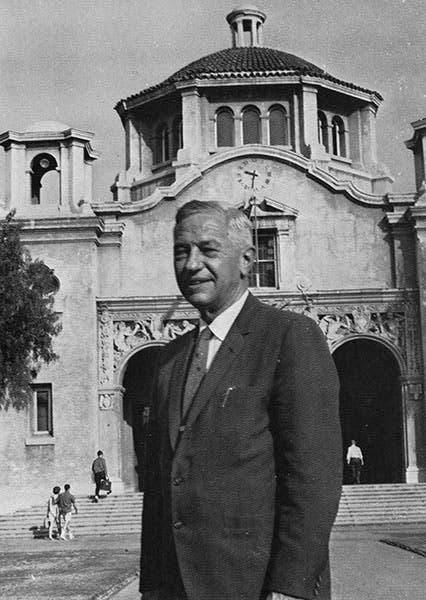Scientist of the Day - Lee DuBridge
Lee Alvin DuBridge, an American physicist and administrator, was born Sep. 21, 1901. We don't often discuss administrators in these posts, but there are many occasions, especially during wartime, when the work of even the most brilliant scientists would come to naught without a competent pilot at the helm. Such was the case with the development of radar in World War II. Just after the United States entered the War, in 1940, the National Defense Research Committee (NDRC) was founded, and Vannevar Bush was put in charge. That committee soon morphed into the Office of Scientific Research and Development (OSRD). Bush and his office were charged with two tasks: build an atomic bomb, and develop equipment that could use electromagnetic waves to detect and track enemy aircraft (radar). For the latter task, a laboratory was established at MIT, code-named the Radiation Laboratory, or Rad Lab. MIT was chosen because a millionaire physicist, Alfred Lee Loomis, had already set up a privately-funded laboratory there, for the purpose of developing radar. At the time, DuBridge was a physicist at the University of Rochester. More importantly, he was dean of the faculty there, an indication that he could manage the work of academic scientists. Dubridge was chosen by Bush to be the director of Rad Lab.
The idea of radar was a simple one: you send out waves, they bounce off objects, a receiver picks up the reflected waves, and the position and velocity of the object are determined. The problem is that the electromagnetic waves that physicists and engineers had experience with were radio waves, which can have wavelengths that are hundreds of feet long. Such waves need very large antennas, and they are too long to reflect off objects as small as airplanes. Shorter waves were needed – microwaves, as they came to be called – which have wavelengths that range from a few inches to a few feet. A foot-long wave would reflect nicely from an airplane and provide a crisp image on an oscilloscope. The difficulty was that no one knew how to produce such waves, since a short wavelength means a very high frequency, in the gigahertz region, and conventional vacuum tube circuits could not generate such high frequencies. The British were the first to develop a suitable microwave emitter, called a cavity magnetron. When Rad Lab was established, English physicists promptly turned over the secrets of the magnetron to the Americans, and Rad Lab was off and running. Within just a few years, the Lab was able to develop radar transmitters and receivers that would fit in the turrets of aircraft, and they were able to produce radar sets in quantity and distribute them to the military, so that by 1945, all U.S. and British aircraft had radar capability. Rad Lab also developed ground-based radar that could detect enemy airplanes and guide anti-aircraft gunnery. By the end of the war, DuBridge was running a laboratory of nearly 4000 scientists and technicians, including such future notable scientists as Luis Alvarez and I.I. Rabi. It was one of the most successful efforts of the War. After the War, his administrative talents recognized, DuBridge was appointed President of the California Institute of Technologiy in Pasadena, and he held that position for 23 years. He served as science advisor for three presidents (Truman, Eisenhhower, and Nixon), and died in 1994. He deserves to be as well-known as Robert Oppenheimer, who led the other great war effort, the Manhattan Project, to a similarly successful conclusion. Dr. William B. Ashworth, Jr., Consultant for the History of Science, Linda Hall Library and Associate Professor emeritus, Department of History, University of Missouri-Kansas City. Comments or corrections are welcome; please direct to ashworthw@umkc.edu.






